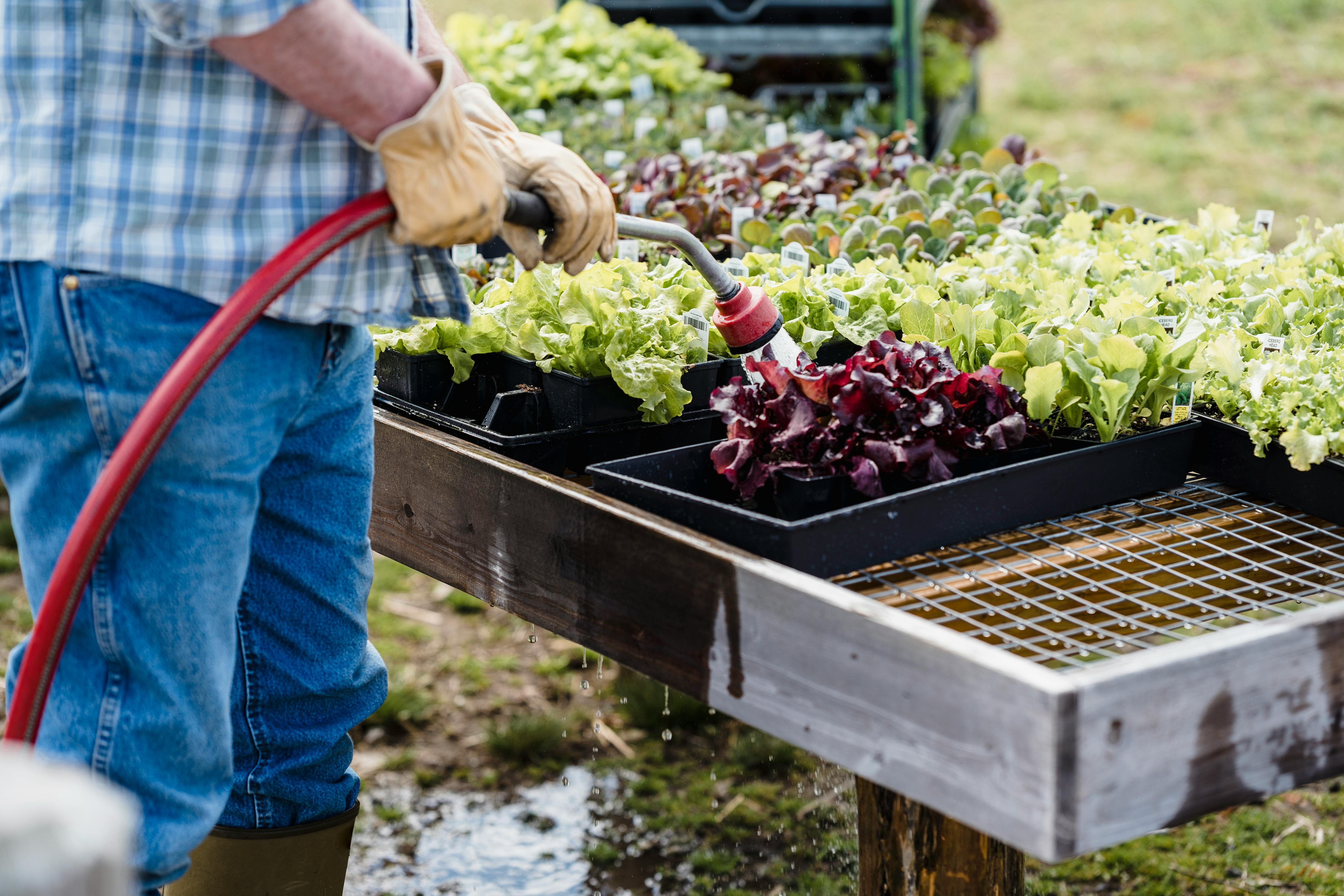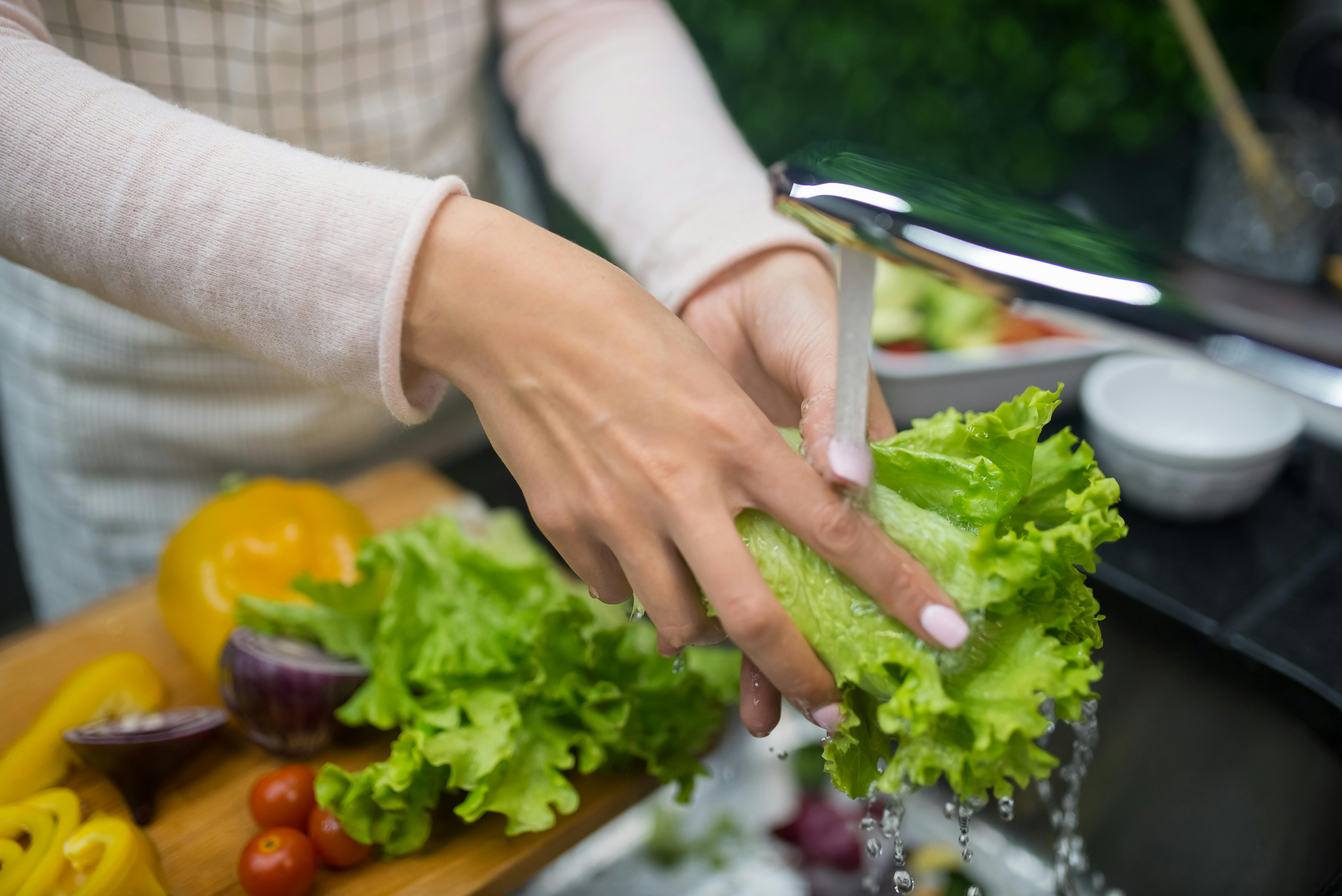Growing lettuce in your home garden or in a container is an easy and rewarding way to enjoy fresh produce. But it’s important to know how much water lettuce needs in order to keep it healthy and hydrated. This article will explain how much water lettuce needs, what type of irrigation is best for growing lettuce, and other helpful tips for successful lettuce growth.Lettuce typically needs about 1 to 2 inches of water per week, which is equivalent to about 1/4 to 1/2 inch of water per day. During the hottest periods of summer, lettuce may need more frequent watering, so it is best to check the soil regularly and water as needed.
How Often Should Lettuce Be Watered?
Watering lettuce is an important part of growing healthy, delicious lettuce. The amount of water that lettuce needs depends on a variety of factors, including the type of lettuce, the climate, and the time of year. Generally speaking, lettuce should be watered deeply and regularly to ensure that it receives enough moisture to thrive.
In most climates, lettuce should be watered at least once a week. During periods of intense heat or drought, you may need to water more often. In cooler climates or during cool seasons such as spring and fall, you may only need to water every other week.
It’s important to remember that over-watering can be just as detrimental as underwatering. If there is excessive moisture in the soil for extended periods of time, the roots may rot which can cause wilting and yellowing of the leaves. If your lettuce is consistently wilting or yellowing, it could be a sign that you are over-watering it.
When watering your lettuce, make sure to water deeply so that the moisture reaches the roots down in the soil rather than simply wetting the surface of the soil. Deep watering encourages deeper root growth which helps plants become more drought-resistant and disease-resistant over time.
Overall, how often you should water your lettuce depends on a variety of factors including climate and seasonality. As a general rule of thumb, try to water at least once a week but adjust as needed depending on weather conditions and signs from your plants themselves!
Signs of Overwatering in Lettuce
Overwatering your lettuce can be detrimental to its health, robbing it of essential nutrients and oxygen. If you notice any of the following signs, your lettuce may be overwatered:
1. Wilting Leaves – Wilting is one of the most common signs that your lettuce is receiving too much water. The leaves will become limp and discolored as the roots struggle to absorb nutrients from the soil.
2. Root Rot – Overwatering can lead to root rot, which is a type of fungal infection that causes the roots to become soft and discolored. This makes it difficult for the plant to absorb nutrients and water, leading to further wilting and discoloration.
3. Yellowing Leaves – The leaves of your lettuce may turn yellow as a result of too much water in the soil. This can indicate that there is an imbalance in the soil’s nutrient content or that your plant is struggling to access oxygen due to overwatering.
4. Stunted Growth – Another sign that your lettuce may be receiving too much water is stunted growth or lack thereof. When overwatered, plants can become stressed and unable to access essential nutrients for growth, leading to stunted development or even death in extreme cases.
If you notice any of these signs in your lettuce plants, you should take steps immediately to correct the problem before it becomes too severe. These steps include reducing watering frequency and ensuring adequate drainage from the soil so that excess moisture does not accumulate around the roots of your plants.
What Is The Best Way To Water Lettuce?
Watering lettuce is an essential part of growing healthy, productive plants. Proper watering can help ensure the best quality and flavor of your lettuce plants. Lettuce prefers moist soil that is not overly wet or dry, so it’s important to find a balance. The best way to water lettuce is to provide a slow, steady supply of moisture to the soil throughout the growing season. A deep watering every few days is ideal, as this will allow the roots to absorb plenty of water without becoming waterlogged.
When watering, make sure you are applying enough water that it reaches at least a few inches deep into the soil. This helps ensure that the roots are getting enough moisture and encourages them to grow deeper into the soil. If possible, use drip irrigation or soaker hoses for more consistent watering. Avoid overhead sprinklers as this can cause some of the leaves to become wet and can encourage disease and fungal growth.
It’s also important to be aware of the weather conditions when watering lettuce. If it’s unusually hot or dry, you may need to water more frequently than normal. On the other hand, if it’s been raining frequently you may be able to skip a few days of watering. Ultimately, check your plants regularly and adjust your watering schedule accordingly.
What Is The Optimal Soil Moisture Level For Lettuce?
The optimal soil moisture level for lettuce is one that provides enough water for the plant to grow without becoming waterlogged. Lettuce is a relatively shallow-rooted crop and does not have a large root system, so it does not need a lot of moisture in the soil. In general, lettuce prefers moist, well-drained soils that are kept evenly moist but not wet. The ideal soil moisture level for lettuce should be kept between 60-70% of field capacity, which is the amount of available moisture held in the soil after it has been saturated. This can be achieved by watering when the top 1-2 inches of soil begins to dry out.
It is important to note that over or under watering can both have negative impacts on lettuce growth and development. Overwatering can lead to root rot and diseases due to anaerobic conditions in the soil, while underwatering can cause leaves to wilt and decrease yields. Therefore, it is important to monitor soil moisture levels regularly and adjust irrigation as needed to maintain optimal conditions. Additionally, adding organic matter such as compost or manure can help improve drainage and increase water retention in sandy soils.
Ultimately, providing adequate but not excessive amounts of water is essential for producing healthy and productive lettuce crops. Monitoring the soil moisture level regularly will help ensure that the plants receive enough water without becoming waterlogged or stressed from drought conditions.

How Can I Tell If My Lettuce Needs More Water?
Watering your lettuce correctly is essential for growing healthy, tasty lettuce. Overwatering can lead to diseases, while not enough water can cause wilting and slow growth. To determine if your lettuce needs more water, there are a few simple signs to look out for.
Firstly, check the soil around the plant’s base. If it feels dry to the touch then it is likely that your lettuce needs to be watered. Another indicator of dryness is wilting of the leaves or drooping of the stems; this generally happens when plants don’t get enough water.
Also, look at the color of the leaves. If they appear dull in color then this could mean that they are not receiving enough water and need additional hydration. Additionally, if you notice that your lettuce plants are wilting in direct sunlight, then this could also be an indication that they need more water as it evaporates quickly in these conditions.
Finally, one way to check if your lettuce needs more water is by poking a finger into the soil near the base of the plant; if it feels dry beneath a few inches then you should give your lettuce a drink!
It’s important to remember that too much watering can be detrimental for your plants as well; overwatering can lead to fungal diseases and rotting roots so make sure you don’t give them too much!
The Benefits of Watering Lettuce Regularly
Water is essential for the growth of any plant, and lettuce is no exception. Regularly watering lettuce is one of the most important factors in growing healthy, robust plants that produce a high yield of delicious leaves. Keeping the soil adequately moist ensures that lettuce plants receive enough moisture to support their growth and development. There are numerous benefits to regularly watering lettuce, including improved root health, better nutrient uptake, greater resistance to pests and diseases, and higher yields.
By keeping the soil around lettuce plants consistently moist, roots are able to access more water and nutrients than they would if the soil were dry. This encourages deeper root growth and increases plant vigor. Deep roots also help keep moisture in the soil during periods of drought or when it is unusually hot outside. Additionally, when lettuce plants are well-watered they are more likely to absorb important nutrients from the soil which can help promote healthy leaf growth.
Another benefit of regularly watering lettuce is that it can help reduce a plant’s susceptibility to pests and diseases. Plants that are stressed due to dry soils or excessively wet soils can become more prone to attack by insects or fungal pathogens. By keeping the soil consistently moist but not overly wet, lettuce plants can remain strong and healthy which makes them less likely to be targeted by pests or disease-causing pathogens.
Finally, regular watering of lettuce plants can also have a positive effect on yields. The combination of deep roots accessing more water and nutrients as well as reduced stress from pests and diseases can result in higher yields at harvest time. This means more delicious leaves for salads or cooking!
In conclusion, it is clear that there are numerous benefits to regularly watering your lettuce plants including improved root health, better nutrient uptake, increased resistance to pests and diseases, and increased yields at harvest time!
What Is The Best Time Of Day To Water Lettuce?
Watering lettuce is essential to keeping the plant healthy and growing. The best time of day to water lettuce is in the morning before the sun is at its hottest. This allows the water to soak into the soil and reach the roots of the plant without evaporating quickly. If you must water in the afternoon, make sure to water deeply and slowly so that the water gets down to where it needs to go. Early morning or just before sunset are also good times for watering lettuce, as temperatures are cooler and your plants won’t be exposed to too much direct sunlight.
When watering lettuce, it’s important not to overwater or allow it to stand in standing water for too long. This can cause root rot and other issues that can kill your plants. It’s better to give them a good deep soaking every few days than frequent shallow sprinkles. Monitor your soil carefully and adjust your watering schedule accordingly if needed.
Lettuce prefers moist but well-drained soil so make sure there are adequate drainage holes in your pots or beds if you’re growing them in containers or raised beds. Mulching can also help keep moisture in but avoid using mulch that is too thick as it can suffocate your plants.

Conclusion
Lettuce is a vegetable that requires a lot of water to grow. It needs 1 to 2 inches of water per week and requires frequent watering, as it is susceptible to drying out quickly. If you are planting lettuce in your garden, make sure you water it regularly and keep the soil moist. For indoor lettuces, make sure the soil is always moist but not soggy.
Overall, it is important to keep lettuce properly watered in order for it to grow optimally and produce quality produce. By understanding how much lettuce needs to be watered and making sure you water it regularly, you will be able to ensure your lettuce is growing healthy and strong.
So remember, when growing lettuce at home or in your garden, make sure you provide it with the necessary amount of water for optimal growth. With regular watering and proper care, your lettuce will be sure to thrive!

